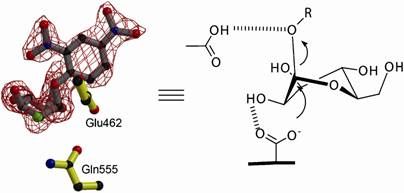An Ideal Candidate for Sustainable Catalysis
Convenient phenol oxidation with iron and hydrogen peroxide
Advertisement
The development of environmentally friendly and efficient catalysts is a major challenge in the field of chemical research, with the focus now being placed on the search for inexpensive metal catalysts. At the Leibniz Institute for catalysis (LIKAT) in Rostock, Matthias Beller, the first recipient of the newly launched European Sustainable chemistry Award, and his group investigate many aspects of applied homogeneous catalysis and some of his latest results on iron catalysis are highlighted in Chemistry—A European Journal.
In Matthias Beller's own words "catalysis is the science that tries to explain how chemical reactions can be accelerated and controlled. It is one of the key technologies for creating a sustainable chemistry.” Already today catalysis enables the manufacture of a wide range of products; in fact more than 80% of all chemical products produced in industry, be it in the field of pharmaceuticals, agrochemistry or polymer chemistry (to name but a few), involve catalysts at some stage in the process of their manufacture.
Quinones are industrially relevant compounds, as they are used as antioxidants in food, medical treatments, and cosmetics. Up to now one of the main industrial processes for the production of this class of compounds involves the use of stoichiometric amounts of copper. This results in large amounts of copper waste and product contamination. Iron, on the other hand, is an ideal candidate for catalysis, because of its abundant availability and its relative non-toxicity compared to precious metals.
Beller and his co-workers have developed an iron-catalyzed oxidation of phenols and arenes to give 1,4-quinones. This novel selective oxidation reaction takes place under mild conditions (room temperature, alcoholic solvents) with hydrogen peroxide as benign terminal oxidant. It should be noted, that next to air, H2O2 is the most “green”, and waste-avoiding oxidant. Applying the inexpensive and practical catalyst system consisting of iron trichloride hexahydrate, pyridine-2,6-dicarboxylic acid, and benzylamine co-ligands, the industrially important oxidation reactions of 2,3,6-trimethylphenol and 2-methylnaphthalene took place in 79% and 55% yield, respectively. The work represents just one of many steps that Beller's group are taking "en route" towards more sustainable industrial chemical processes.
Original publication: Matthias Beller et al.; "Selective Iron-Catalyzed Oxidation of Phenols and Arenes with Hydrogen Peroxide: Synthesis of Vitamin E Intermediates and Vitamin K3"; Chemistry - A European Journal 2010, 16, No. 34, 10300–10303.
Other news from the department science
Most read news
More news from our other portals
See the theme worlds for related content
Topic world Synthesis
Chemical synthesis is at the heart of modern chemistry and enables the targeted production of molecules with specific properties. By combining starting materials in defined reaction conditions, chemists can create a wide range of compounds, from simple molecules to complex active ingredients.

Topic world Synthesis
Chemical synthesis is at the heart of modern chemistry and enables the targeted production of molecules with specific properties. By combining starting materials in defined reaction conditions, chemists can create a wide range of compounds, from simple molecules to complex active ingredients.



























































